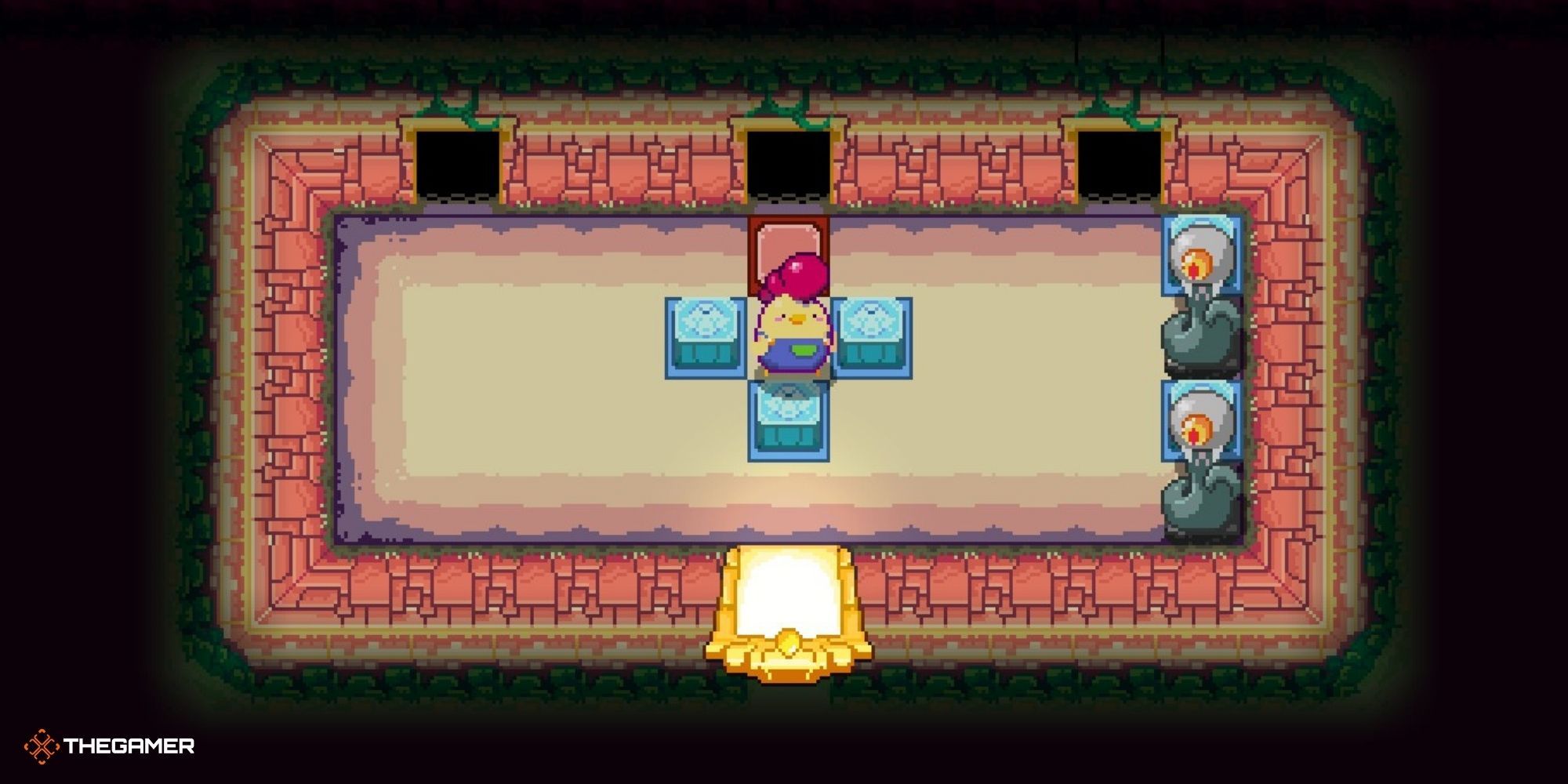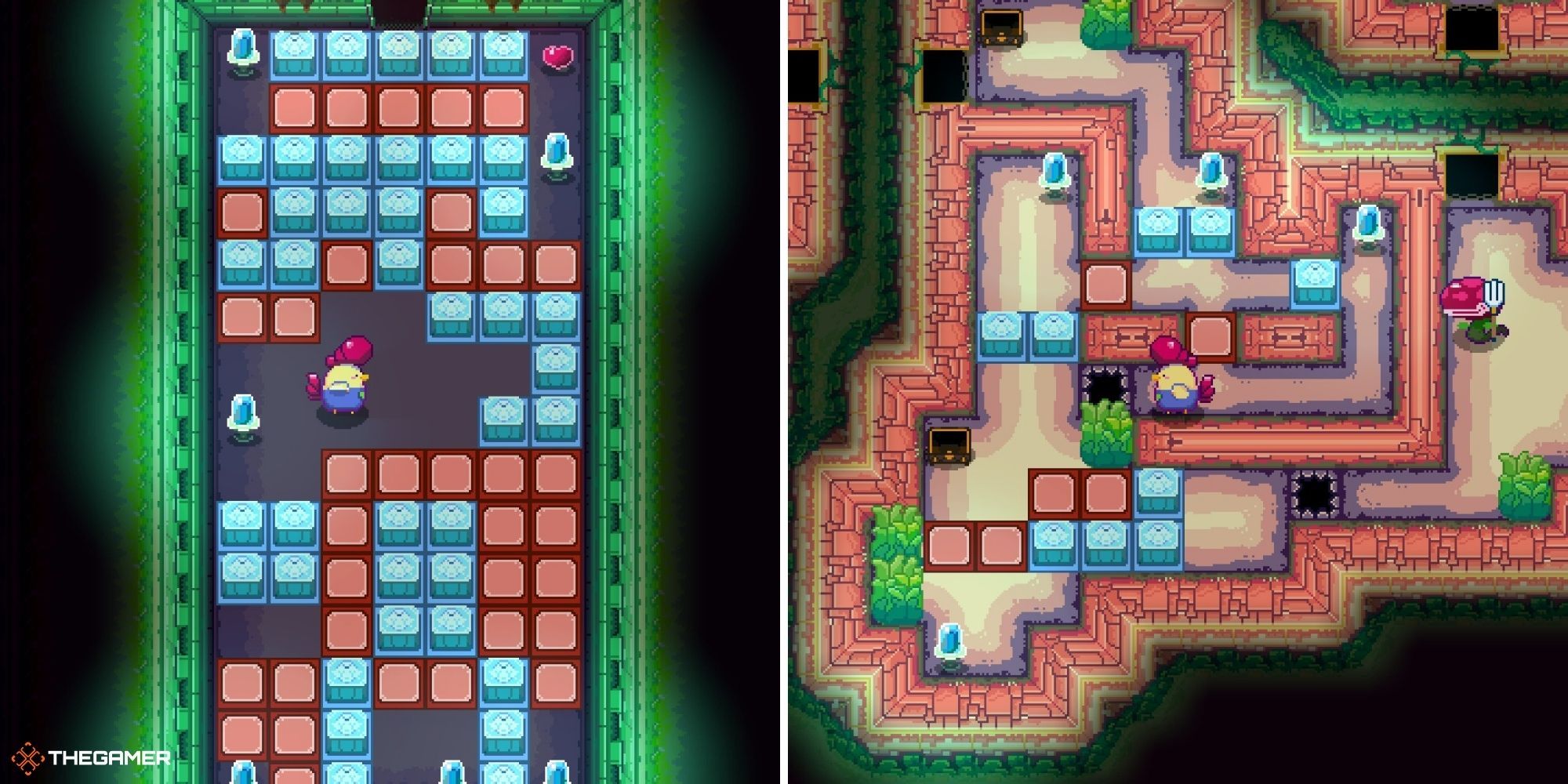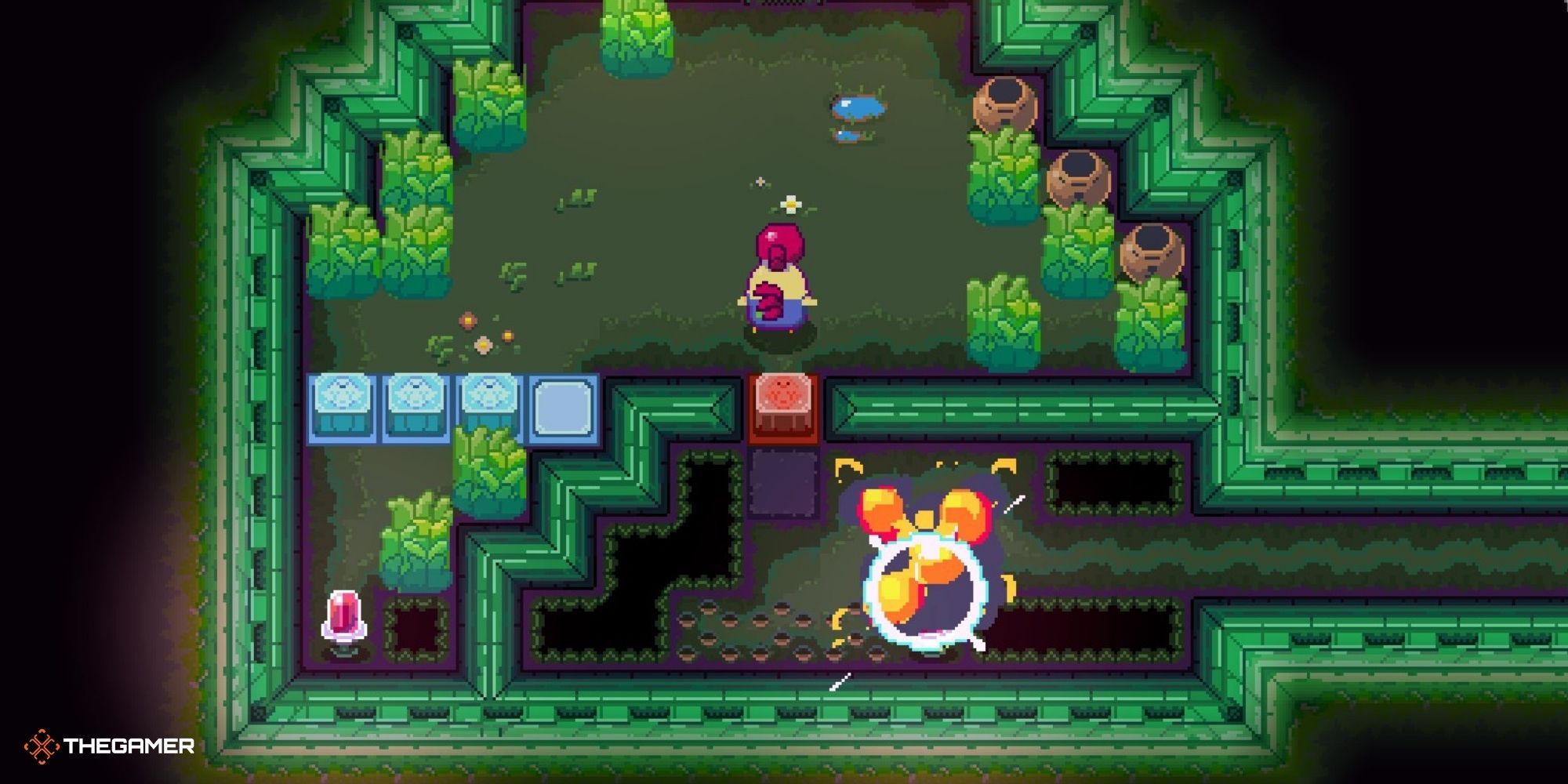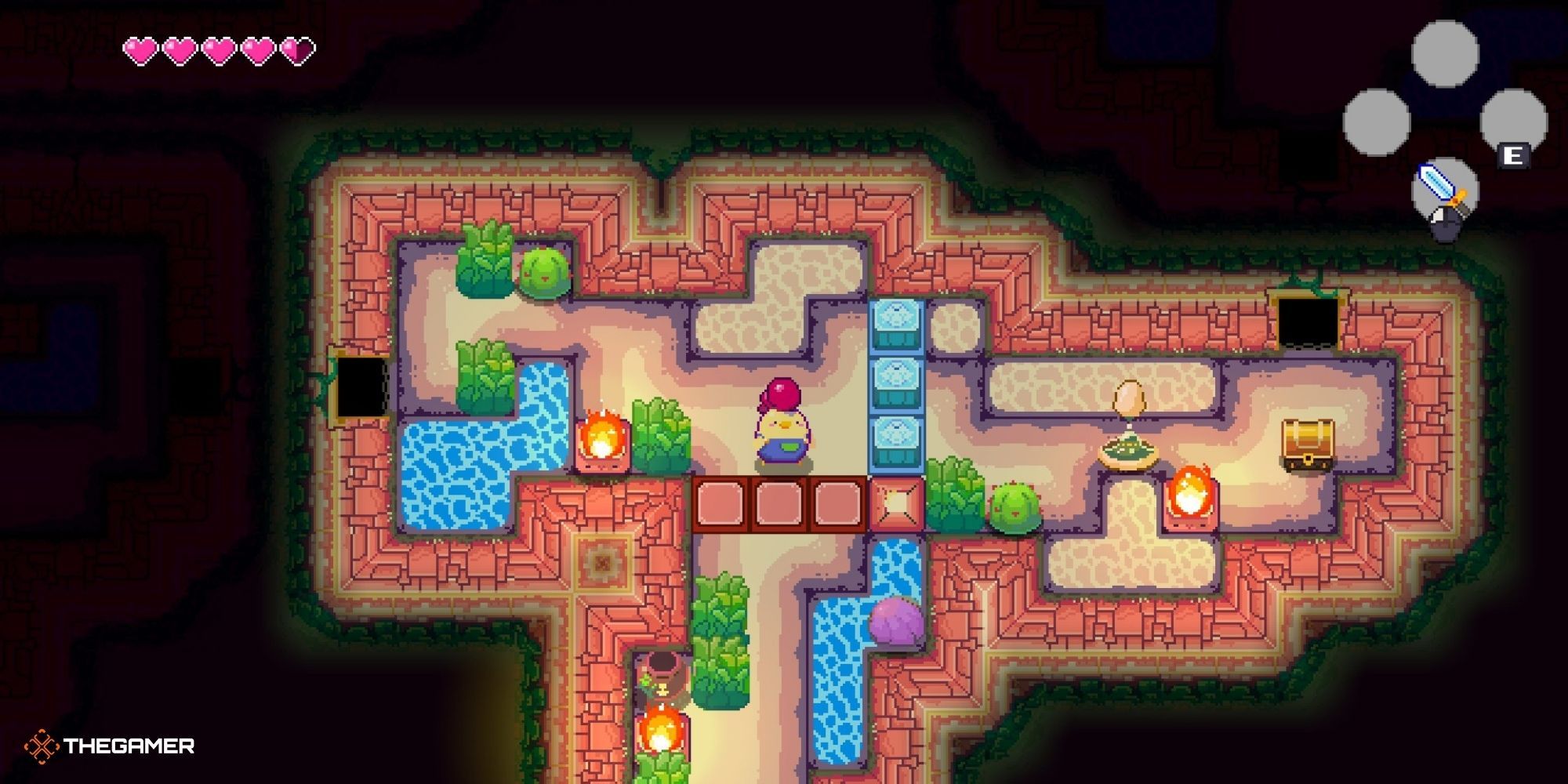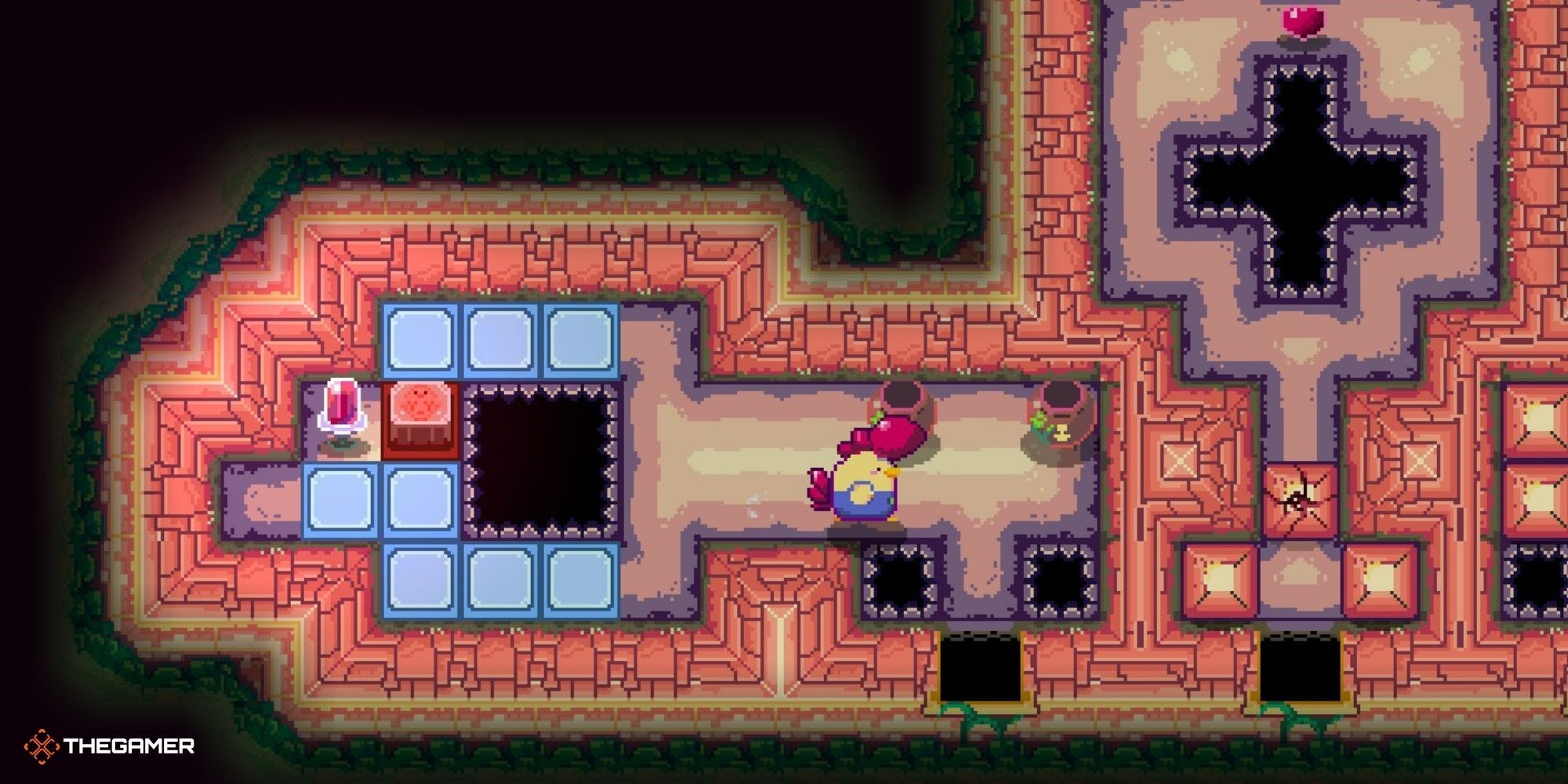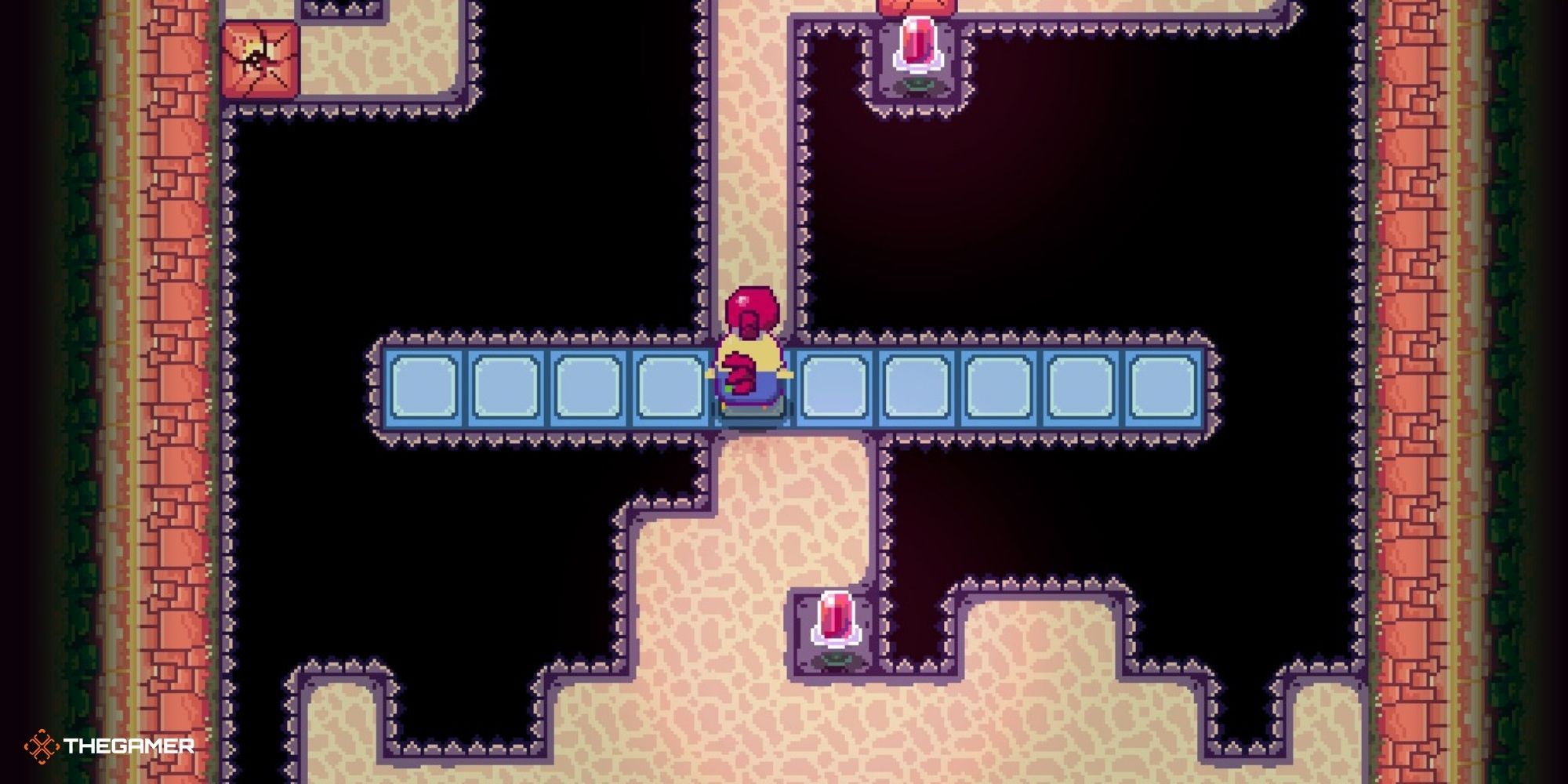In Super Dungeon Maker, you spend your time building challenging arenas for players to test their skills. That can mean adding enemies, building puzzles, hiding traps, and more! You have complete creative freedom.
One mechanic the game gives you access to is a switch and tiles that rise and fall. When the switch is glowing red, the red tiles will activate, and vice versa for blue. In this article, we provide some tips and suggestions that you can keep in mind when trying to include this mechanic in your own dungeon.
6 Make It Dangerous To Switch Them
A simple and effective way to add complexity to any puzzle is by introducing an element of danger.
In the example featured above, the player is safe from the attacks of those Spinning Statues because they're hiding behind the blue tiles. If they make the switch and activate the red tiles instead, they'll be put at risk and need to stay light on their feet. Plenty of different enemies or traps would work effectively to add risk to your switch puzzles. Consider…
- where they'd be placed in the room
- how many the player will have to deal with and for how long
- whether long or short-range might be most effective
…among other factors.
Image from a dungeon by the game's developer.
5 Build Mazes
People love hedge mazes on farms for a reason, right? Whether you decide to take that advice literally or not, the sentiment remains: mazes are a great opportunity to utilize switches. They're so perfect that they may as well have been made for that exact purpose!
The examples above are on a small scale, taking up only one room. However, it's entirely possible to make a more complex maze out of a bunch of rooms and force the player to navigate it, interacting with the switches as they go!
Left-hand image from a dungeon by in-game user Loudkuyuki. Right-hand image from a dungeon by in-game user Alsto.
4 Activate Switches In Unconventional Ways
Switches can be activated in all sorts of ways, not just with a swipe of your sword. So, why not halt your player in their tracks by requiring them to use unconventional tools to activate switches?
Throwing pots or using a Hookshot can allow players to activate switches that they couldn't reach by foot. Activating the switch by placing a bomb nearby gives the player a chance to move to another location before the change occurs. These are the kind of creative things you can do if you aren't restrained by the thought that the player has to stand next to the switch.
Image from a dungeon by in-game user Loudkuyuki.
3 Don't Let Them Figure It Out The First Time They See It
There's nothing better than the feeling that you've figured out a mystery that your brain has been working on in the background. If you place a switch puzzle early in the dungeon, but there's nothing the player can do about it, they'll inevitably be forced to move on. However, the problem will stick in the back of their brain like a fly on a wall as they try to work out what the solution was (even just subconsciously).
When they finally do work it out later in the dungeon, perhaps because you gave them a new Power-up or a path led them around to another side, they'll be thrilled! It's a great tactic to keep your player invested.
Image from a dungeon by in-game user CamronJK.
2 Test For Unconventional Solutions To Your Puzzle
You'll have to test out everything in your dungeon eventually if you want to post it online for others to enjoy, but we've included this tip because you should devote extra time to testing out the switch puzzle(s) you set up.
That's because the switch puzzles are probably more complicated and nuanced than other parts of your dungeons, with plenty of elements you may not have considered. There may be solutions to your puzzles that you didn't intend to provide. You may have forgotten the player would have access to a certain Power-up. Whether you change it or not is up to you – after all, sometimes unconventional solutions are great for clever players – but it's better to know about them than not to.
Image from a dungeon by the game's developer.
1 Add A Timer
While the game doesn't actually have an in-game timer you can add, there are plenty of ways to give your players a limited amount of time to solve a puzzle. An example is featured above; in this dungeon, the switch puzzle is surrounded by Quicksand, which means the player can only stand on it for a little while before they're swallowed up.
Things like this add to the sense of urgency and make the player more likely to screw up simple tasks. The puzzle doesn't even need to be that difficult – the looming threat of being swallowed by Quicksand is painful enough!
Image from a dungeon by the game's developer.
Source: Read Full Article
